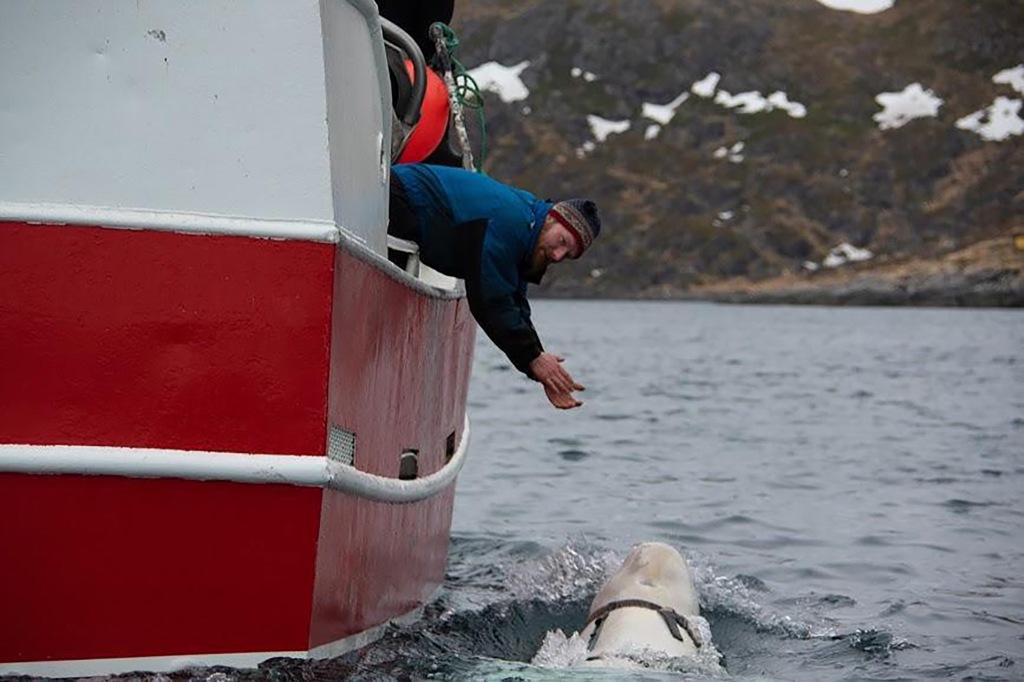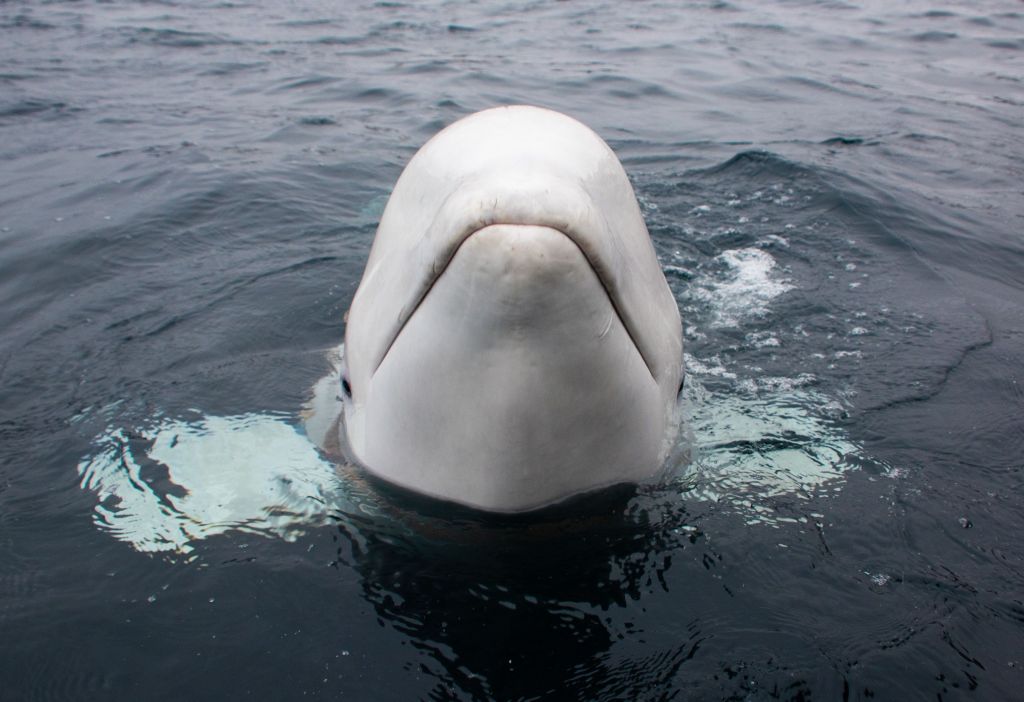Suspected Russia-trained spy whale seen off Sweden’s coast
You never know who is whale watching.
A beluga whale suspected to be a spy trained by the Russian navy appeared off the coast of Sweden on Sunday, officials tracking the creature’s movement said Monday.
The supposed spy grew to fame after he was discovered wearing a human-made harness off the coast of Norway in 2019 and has spent over three years slowly moving down the Norwegian coastline.
More recently, the great white whale has picked up speed, moving from the Norwegian coast to Sweden.
Locals nicknamed the whale Hvaldimir, a cheeky reference to the Norwegian word for whale, hval, and Russian President Vladimir Putin.
The big fish was seen in Hunnebostrand, off Sweden’s south-western coast, on Sunday, according to marine biologists with OneWhale, an organization tracking his movement.

“We don’t know why he has sped up so fast right now,” said OneWhale Marine Biologist Sebastian Strand.
The alleged aquatic agent’s current route is puzzling to scientists because he is moving “very quickly away from his natural environment,” according to Agence France-Presse.
“It could be hormones driving him to find a mate. Or it could be loneliness, as belugas are a very social species – it could be that he’s searching for other beluga whales,” Strand added.
According to Strand, the sea creature is believed to be about 13 or 14, which is an age when their hormones are very high.
While Hvaldimir’s health “seemed to be very good” in recent years, OneWhale scientists worry about his ability to find food in Sweden and have observed that he has already lost some weight.
Scientists believe that Hvaldimir has not seen another beluga since he arrived in Norway in April 2019.
The closest group of beluga whales live in the Svalbard archipelago, between the northern coast of Norway and the north pole.

When Hvaldimir was first spotted in the Norwegian Arctic, marine biologists removed a human-made harness from him.
The harness featured a mount suited for an action camera and the words “Equipment St Petersburg” printed on its plastic clasps.
Officials said the white whale may have escaped an enclosure after being trained by the Russian navy since he appeared to be accustomed to humans.
Last week, Norwegian officials urged residents to be wary of the whale because it could be a Russian spy.

Frank Bakke-Jensen, the Norwegian Directorate of Fisheries, said Wednesday that even though Hvaldimir is “tame and used to being around people,” residents should still avoid contact with the massive mammal.
“We especially encourage people in boats to keep a good distance to avoid the whale being injured or, in the worst case, killed by boat traffic,” Bakke-Jensen said.
The aquatic mammal “suffered minor injuries, primarily from contact with boats,” and the “risk that the whale may be injured due to human contact has become significantly greater,” the agency said in a statement.
“We have always communicated that the whale in question is a free-living animal and we see no reason to capture it and put it behind barriers,” Bakke-Jensen said, noting that the animal would continue to be monitored.

Russian officials have not commented on Norwegian speculation that Hvaldimir could be a Russian spy.
Beluga whales can grow up to 20 feet in length and live anywhere from 40 to 60 years.
They generally live in icy waters near Greenland, northern Norway and Russia.
Read the full article Here


